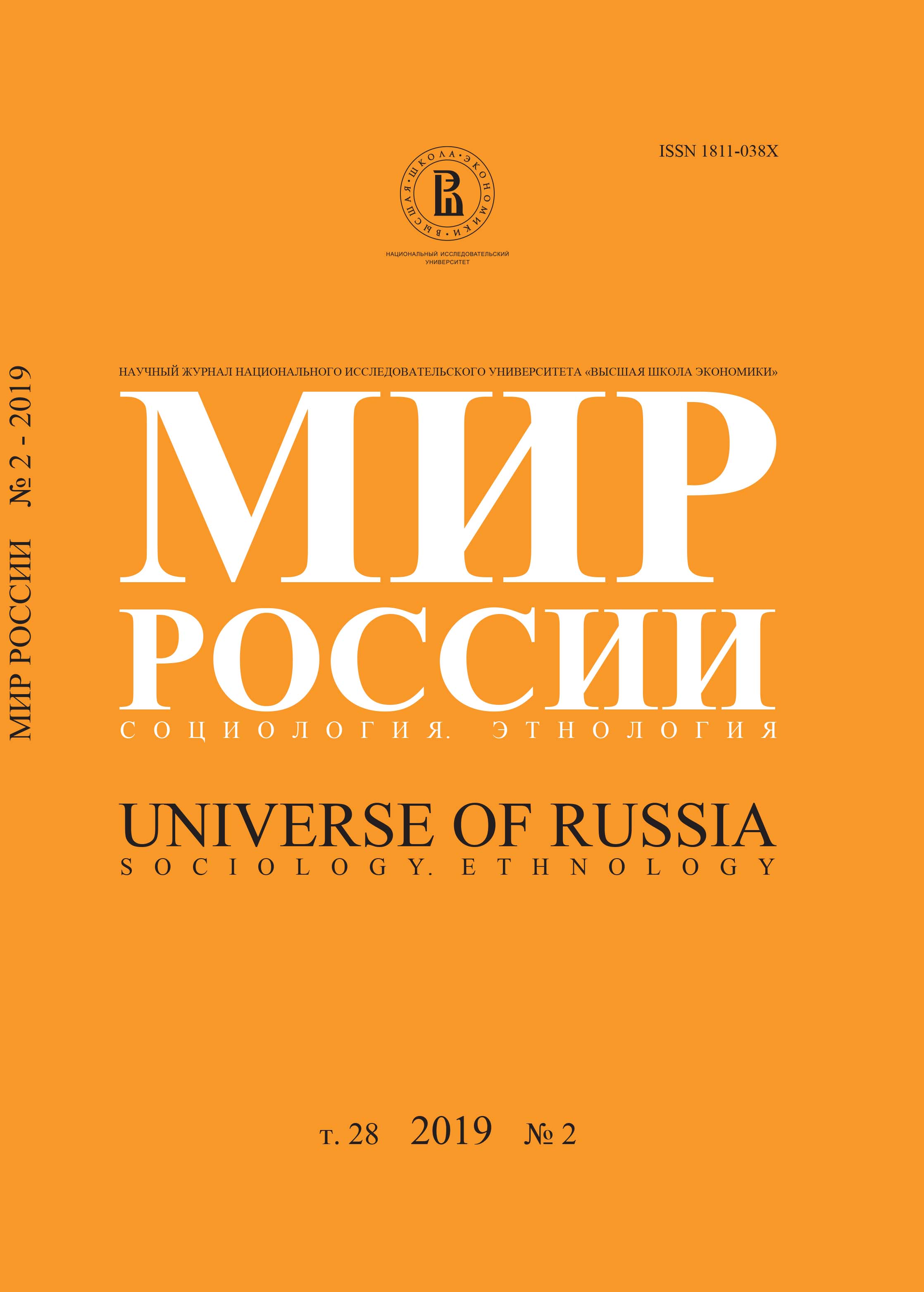The Communal State: an Experiment in Workers’ Democracy in Russia in 1918 and Its Failure
Abstract
Citation: Medushevskiy А. (2019) The Communal State: an Experiment in Workers’ Democracy in Russia in 1918 and Its Failure. Mir Rossii, vol. 28, no 2, pp. 63–83 (in Russian). DOI: 10.17323/1811-038X-2019-28-2-63-83
The utopian Communist ideal of a workers’ state, which was put into action after the Bolshevik takeover of power in Russia in 1917, provoked new types of social mobilization, adaptation, and domination and new political institutions. At the core of this experiment was the new concept of Labor Unions as a form of intermediate democracy which could potentially be transformed into a communal state based on the collective production and distribution of property, wealth, and social responsibility between broad nets of workers unions. was scrutinized as a rare or even unique historical example of how the abstract syndical concept of a stateless society (based on cooperation and solidarity rather than on bureaucratic control) could be put into reality. This form of self-government was interpreted as a substantive historical alternative to the traditional “bourgeois” state with its key institutions – parliamentarianism, the separation of powers and an independent judicial system. In some current left-oriented theories, this is considered a “model” experiment – successful, consecutive and effective in its initial stage (in the period of
the so-called “War Communism” in 1918–20), but revised and finally rejected in the following period of bureaucratic Communism with its one-party hegemony and Stalinist dictatorship. In order to understand the scientific value of such statements, the author provides a detailed analysis of the principles, initial forms and implications of Soviet labor self-government in the early formation period (1918), using multiple primary
sources – the minutes and protocols of central and local labor unions, the old and the new ones, which depict the social, professional, and administrative stratification of Russian revolutionary society during its formation. The author’s central argument is that the so-called deterioration of labor selfgovernment in Soviet Russia was rooted mainly in the internal transformation of unions as formal organizations rather than external pressure or strategic mistakes. From the very beginning the revolutionary labor unions were different from the typical Western
social democratic unions – they had a different, more traditional, social background, and sought a different role in social transformation. A combination of internal and external factors in this transformation created the institutional basis for a new type of social inequality, the development of oligarchic trends in Soviet labor unions, and the formation of a new “labor bureaucracy”. The Bolshevist party exploited these trends but did not generate them. In other words, the whole experiment in workers’ democracy from its very beginning was profoundly unrealizable and belongs to the museum of human utopian social projects.






